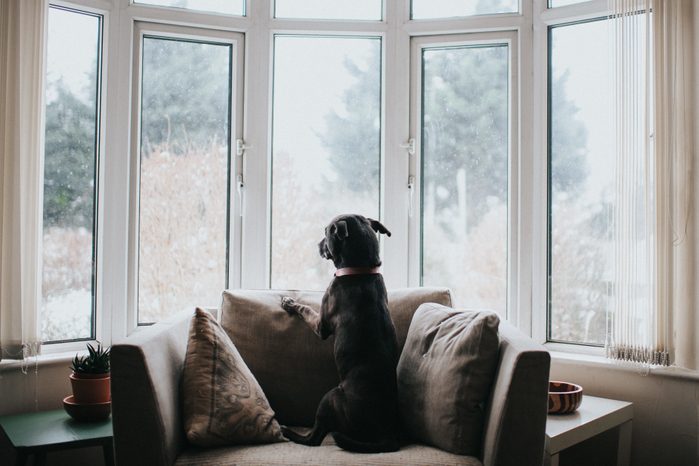
Home alone
You can’t wait to get back to work and your normal life as our stay-at-home orders are lifted. Your dog, on the other hand, is probably not as enthusiastic about the idea as you are, especially if you adopted during the coronavirus pandemic. Dogs have gotten used to having their owners around all the time, not to mention being showered with constant love and attention. That means once you go back to work, your dog may suffer from separation anxiety, a common behavioral disorder that can lead to destructive behavior. “Separation anxiety can form in just a few short days, and you want to be smart about your interactions with your pet now so everyone is happier as we return to normal,” says Rob Jackson, CEO and co-founder of Healthy Paws, a pet insurance company. Here’s how to prepare your dog for being alone in the house.
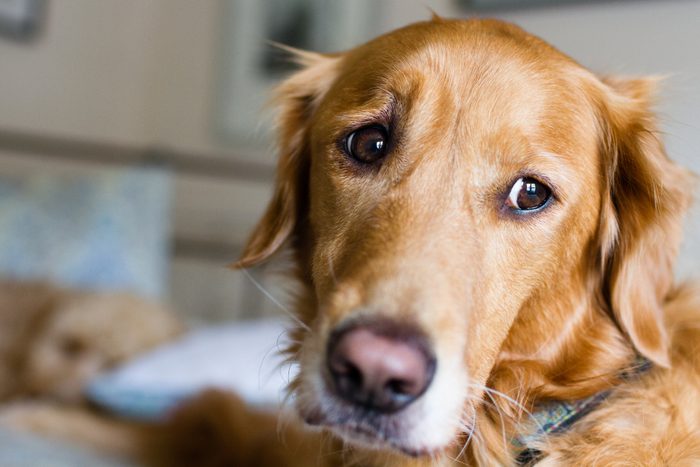
What is separation anxiety?
Certain dogs, like certain humans, are born predisposed to anxiety disorders. Separation anxiety occurs when dogs can’t be with the person or people they’ve bonded with and start to experience distress. For some dogs, it can occur when their owner simply leaves the room, while for others it manifests when they’re left alone at home for hours. Separation anxiety can occur even if there are other pets in the home. “We don’t really know why separation anxiety occurs, but every dog is potentially at risk for it, especially if there is a sudden or dramatic change in their schedule,” says Valarie Tynes, DVM, owner of Premier Veterinary Behavior Consulting in Sweetwater, Texas. Find out if dogs are at risk for coronavirus.
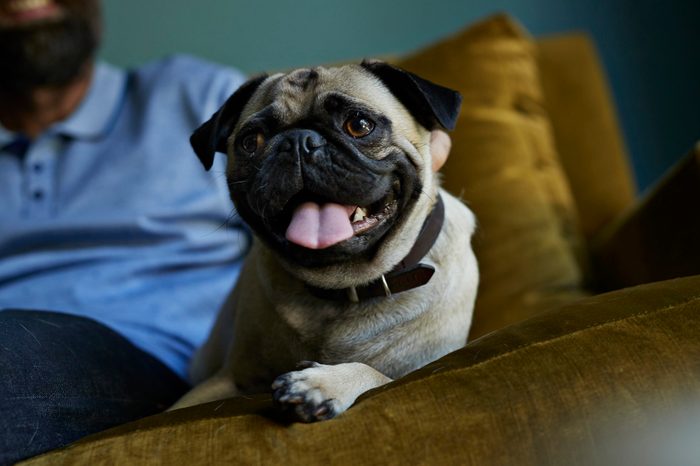
Anxiety warning signs
According to Natalie Marks, DVM, CVJ, a veterinarian and medical director at Blum Animal Hospital in Chicago, signs of separation anxiety can include things like:
- Barking, howling or whining when the owner is away from home
- Panting and pacing
- Excessive drooling
- Destructive behavior such as digging at the carpet, scratching around door frames, and destroying furniture
- Peeing or pooping in the house
- Vomiting or diarrhea
In severe cases, dogs may even injure themselves trying to get out of a crate or over a baby gate.
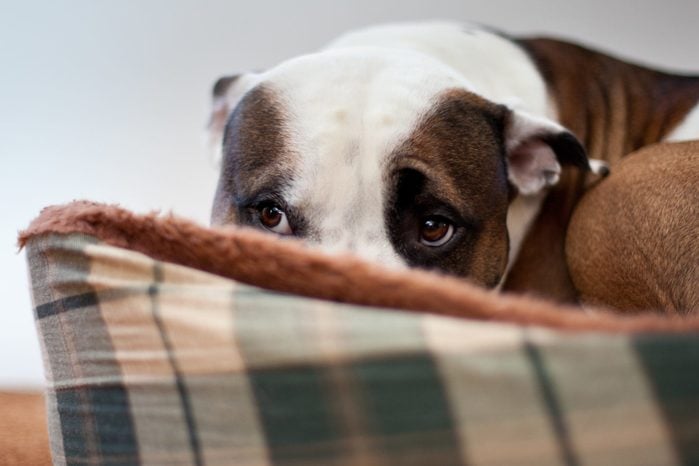
Baby steps: Act like you’re already back at work
To start separating from your pet, go into your home office or bedroom and close the door so the dog isn’t with you. You want to mimic your usual work schedule to get the dog into a routine that can continue when you’re back at the office. “If you would typically crate your dog, continue to do so,” advises says James C. Ha, PhD, a certified applied animal behaviorist who consults for Healthy Paws. “If you leave a special treat or feed them just before leaving, follow that routine.”
Also start leaving the house without the dog for longer and longer periods of time, advises Dr. Tynes. It might seem cruel to take regular walks without your dog, but it’s critical that the dog understands that sometimes you’ll be going out alone. If you’re wondering how long you can leave your dog alone at home, here’s the answer.
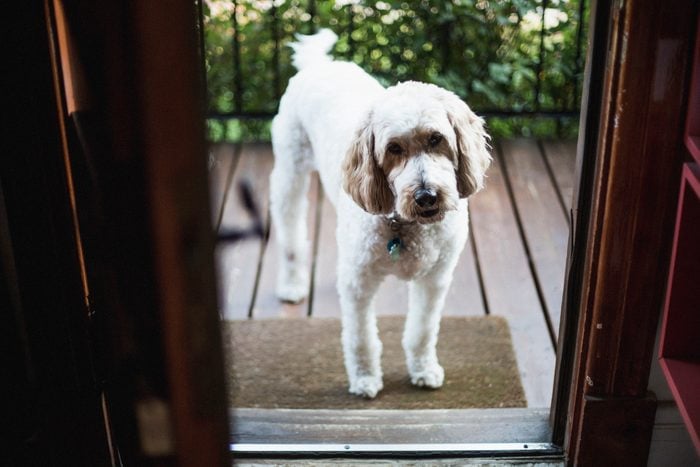
Make entrances and exits non-events
Most dogs are alert to certain sounds or movements that signal a pet parent is getting ready to leave the house. This could be something like putting on your shoes, grabbing your keys, saying a certain word, or using a high-pitched tone of voice when saying goodbye. “Watch your dog carefully to see if you can identify any of these triggers,” advises Dr. Marks. “If you notice your dog paces and pants every time you put on your shoes, repeat this behavior numerous times a day without leaving to desensitize your dog to it.” She also recommends not acknowledging your dog for five to ten minutes when you return, or until the dog is settled to lessen the importance of separations in your dog’s mind.
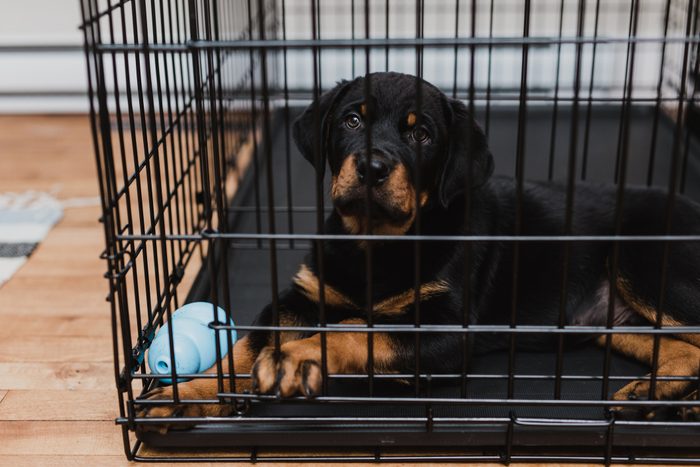
Crate train your dog
A crate can be your dog’s best friend. “You never want to force a dog into a crate or keep it there if it is obviously in distress,” says Dr. Tynes. “Crate training is most valuable for young or new dogs to prevent them from getting into things you don’t want them to get into, like the trash,” she adds. It can also help with housebreaking since most dogs won’t eliminate in a place where they sleep. “Crate training sets a dog up to be successful. None of us can learn if we’re not pointed in the right direction,” says Dr. Tynes. Follow these crate training tips so your dog learns to see the crate as a safe haven and will voluntarily enter it.
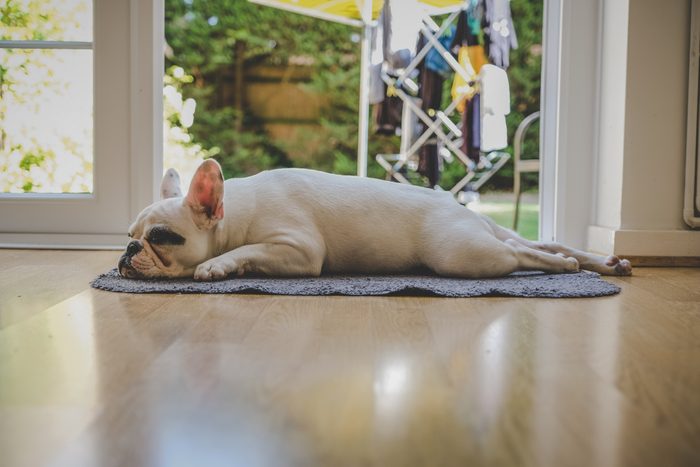
Teach the dog to “settle”
Some dogs need to be taught that they won’t always have access to their owners even when they’re home. They need boundaries so they know how to behave and feel safe. They also need to be trained to relax and rewarded for calm behavior.
With your dog on a leash, get him or her to sit on a mat by the door. Attach the lease to a doorknob so the dog can’t move, but can see family members. When it sits patiently and doesn’t vocalize while on the mat, give your dog a special treat and an encouraging word, and pet it with long, smooth strokes. Don’t react if the dog does make noise. “Working on this command helps your dog to build confidence about being physically away from the family,” reports Dr. Marks.
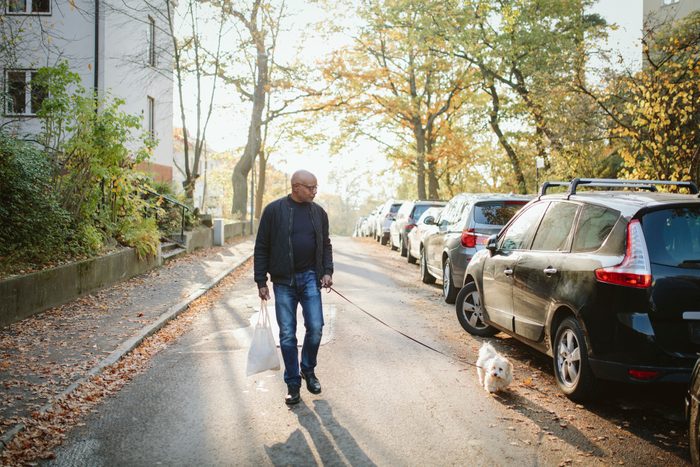
Once you go back to work
First, make sure you take your dog for a long walk before you leave for the day; a tired dog is often a calm dog, according to the American College of Veterinary Behaviorists (ACVB). Next, play some low-level, soothing noise in the house, like a TV or music, suggests Dr. Tynes. Mozart for Dogs is a three-CD classical music set that has been proven to calm anxious dogs. For puppies, you might consider leaving them in a crate with a Smart Pet Love Snuggle Puppy, a stuffed puppy that contains a heat pack and pulses with a heartbeat to make pets feel less alone and more secure. There are lots of other simple things you can do to keep your dog happy while you’re at work.
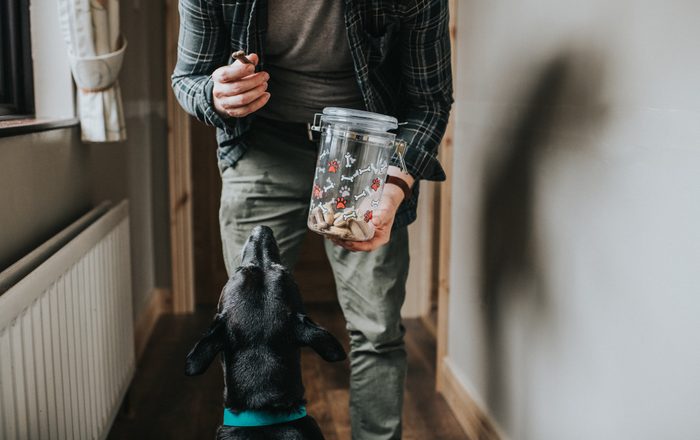
Make leaving time the best part of your dog’s day
Turn your absence into a positive experience by giving the dog a food treat to distract him or her during the first few minutes you’re gone. For instance, Dr. Tynes only gives her dogs Kong toys stuffed with treats or safe chews when she goes out and never when she’s home. “Alternatively, you can sprinkle dry kibble in your dogs’ bed or crate for them to find,” she says. Dr. Ha suggests freezing a food treat puzzle filled with peanut butter or spray cheese, or wet food in an ice cube tray for their breakfast. Freezing will make the food last longer, during which time they won’t be focused on the fact that you’ve left them alone.
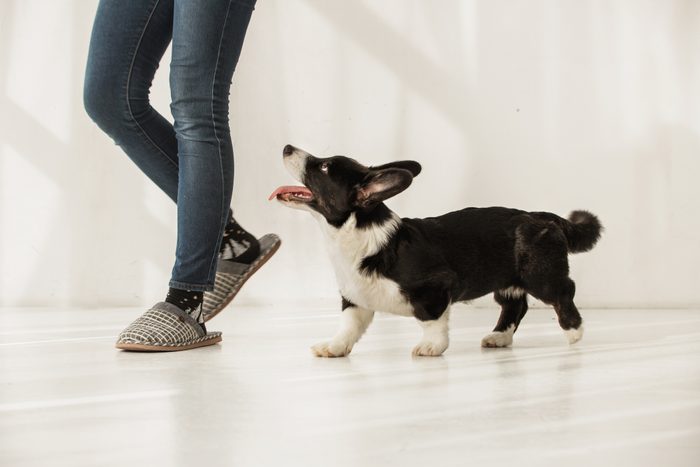
Be on the lookout for early signs of anxiety
Despite your best efforts, changes in your schedule can still trigger separation anxiety. If your dog starts watching you closely, following you from room to room and has a worried expression on its face, try videotaping the dog with your cellphone or another camera to see how he or she behaves when you leave the house for 15 to 20 minutes. If the dog is pacing or panting, whining, trying to get out of its crate, or showing other signs of distress, it’s time to talk with your vet (and bring the video with you to the visit). It’s important to catch separation anxiety early—both so dogs don’t suffer and so they don’t become destructive, says Dr. Tynes.
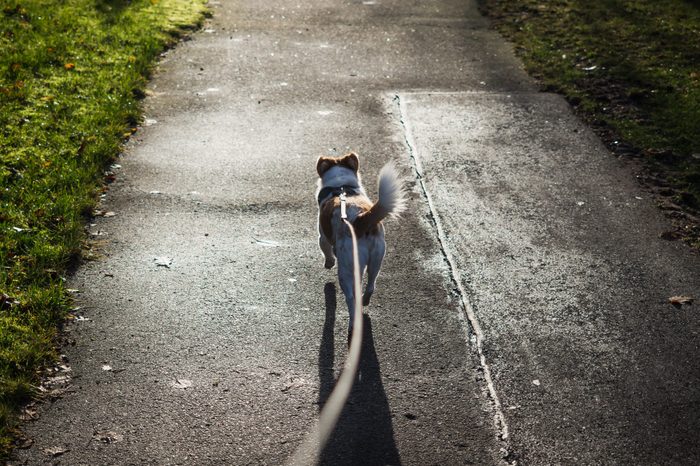
Separation solutions
There are a variety of strategies you can try to calm your dog: You might arrange for a pet sitter to walk your dog at lunchtime or enroll the dog in doggie daycare. You can try Adaptil, a collar that releases an odorless chemical that mimics a mother’s smell and makes dogs feel safe and calm, according to Dr. Tynes, who consults to Ceva Animal Health, the company that makes the product. Anti-anxiety medications such as Reconcile and Clomicalm may be in order for dogs that get severely panicky when left alone. Combining drugs with behavioral modifications may start relieving separation anxiety within a week, according to the ACVB’s book, Decoding Your Dog: The Ultimate Experts Explain Common Dog Behaviors and Reveal How to Prevent or Change Unwanted Ones. In any case, don’t give up and don’t blame your pup for its behavior. It takes dogs a little while to adjust to new situations, and COVID-19 has been stressful for us all!
